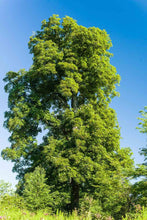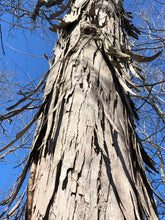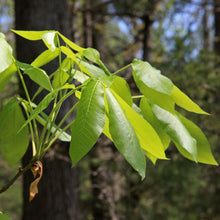|
Mature height x width: |
approx 60-80' x 40' |
|
Recommended initial spacing: |
5'-10' in rows 20' apart (to be thinned later) |
|
Recommended final spacing: |
20-30' (intermediate) 50' (final) |
| Hardy to: | approx -25°C |
|
Preferred soil: |
deep, moist, fertile soils. |
|
Good for: |
long storage, ornamental, slow-growing |
|
Uses: |
dessert, main dish |
Shagbark hickories are not well-known as nut-bearing trees, but they produce a tasty, buttery nut. They are particularly ornamental because of their remarkable peeling, 'shaggy' bark. Additionally, they have incredible fall colours and valuable wood. Adapted as they are to deep forests, hickories grow slowly initially but eventually become massive trees (up to 80 feet tall!)
Genetics: Shagbark hickories are native to the eastern US and Southern Ontario, and these seedlings are from the Niagara region, in the northern part of their range, selecting from the most productive trees with the best kernel extraction capacity. We recommend at least two trees (ideally more) to ensure the best crop.
Planting: hickories want deep, fertile soil with pH 5 to 8. They can tolerate shade, but expect slow growth and limited yields in the shade.
Why seedlings? Growing seedlings from productive, vigorous parents helps maintain diversity (each seed is a new variety) while drawing on some of the best genetics available. In other words, by planting seedlings, you are participating in the breeding and selection of new, regionally-adapted varieties!
Why bare root? "Bare root" means that the tree has been grown in the ground (rather than in a pot). In general, bare root trees tend to have larger root systems because their roots aren't constricted by the edges of the pot. Because we don't need to use pots or potting soil, we can sell them more cheaply than potted trees. Bareroot trees must be planted when they are still dormant (Nov - Mar in our region).







